There are over 220 living owl species around the world, but only 10 have been recorded in Alabama. Read on for the complete list of types of owls in Alabama, and find out how they currently rank in rarity according to the Alabama Department of Conservation and Natural Resources (ADCNR).
1. Barred Owl (Strix varia)
Status in Alabama: Lowest Conservation Concern

The barred owl is a large, dark-eyed species named for the stripes on its chest.
©FotoRequest/Shutterstock.com
Barred owls are familiar year-round residents across Alabama. They prefer old-growth forests but are adaptable to various other wooded habitats, including swamps. They have also adapted to living in smaller patches of woodland near human developments. The ADCNR notes that barred owls are also the owls most likely to be seen and heard during the day in the state.
2. Eastern Screech Owl (Megascops asio)
Status in Alabama: Low Conservation Concern
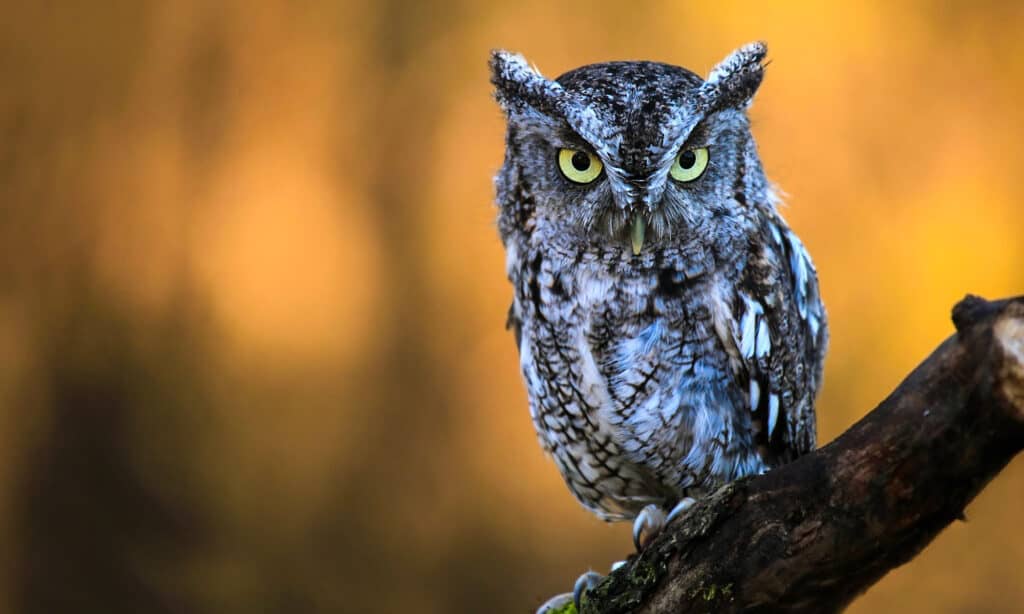
The eastern screech owl is a small, yellow-eyed species that occurs in rufous, gray, and intermediate morphs.
©mlorenz/Shutterstock.com
Eastern screech owls are common year-round residents across Alabama. They reside both in forests and a variety of other wooded habitats, as well as lake shores. They also adapt well to suburban and even urban landscapes so long as good nesting trees are available!
3. Great Horned Owl (Bubo virginianus)
Status in Alabama: Moderate Conservation Concern
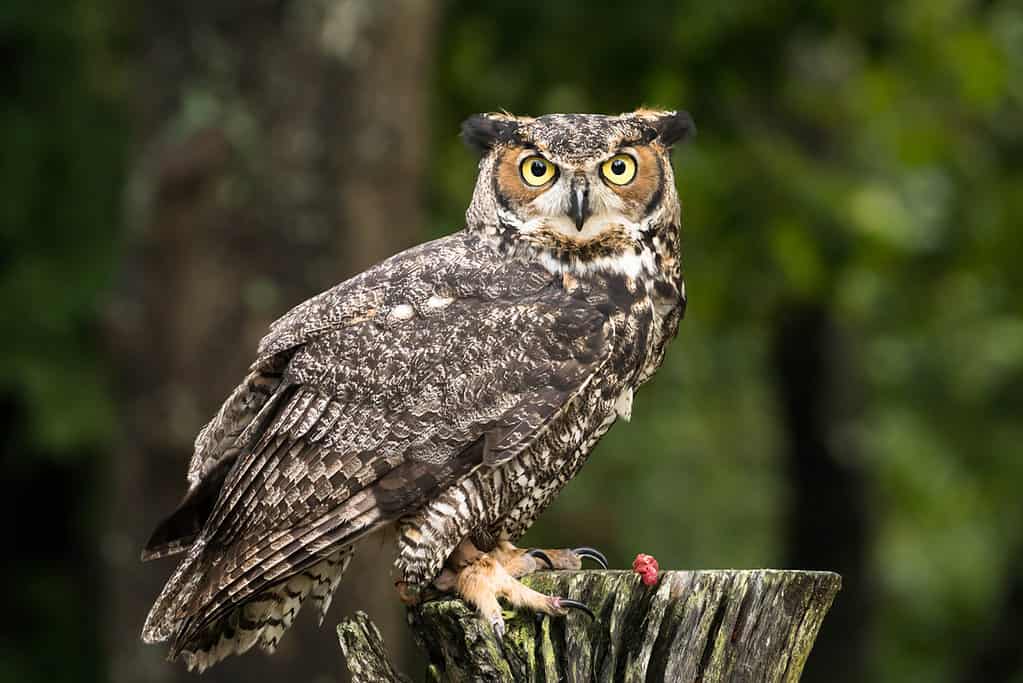
The great horned owl is a yellow-eyed species named for its ear tufts and one of North America’s largest owls.
©iStock.com/makasana
Great horned owls are among the most common owls across North America. They are pretty common year-round residents in Alabama and are the largest resident owls in the state. They utilize a wide variety of habitats, preferring a combination of wooded areas for nesting and roosting and open areas for hunting. In Alabama, they are most commonly found in dense woodlands in the east and north, while preferring rocky canyon cliffs or earth-walled gulches in the west.
4. Barn Owl (Tyto alba)
Status in Alabama: Moderate Conservation Concern

The barn owl is a large, dark-eyed species with long legs and a heart-shaped face characteristic of the barn owl family (Tytonidae).
©Michael Shake/Shutterstock.com
Barn owls are widespread across the United States, including in Alabama, where they are year-round residents across the state. However, the ADCNR also reports they have become uncommon to rare across all 67 counties. They are most common in agricultural lands and other open areas but adaptable to various different habitats.
5. Northern Saw-Whet Owl (Aegolius acadicus)
Status in Alabama: Moderate Conservation Concern
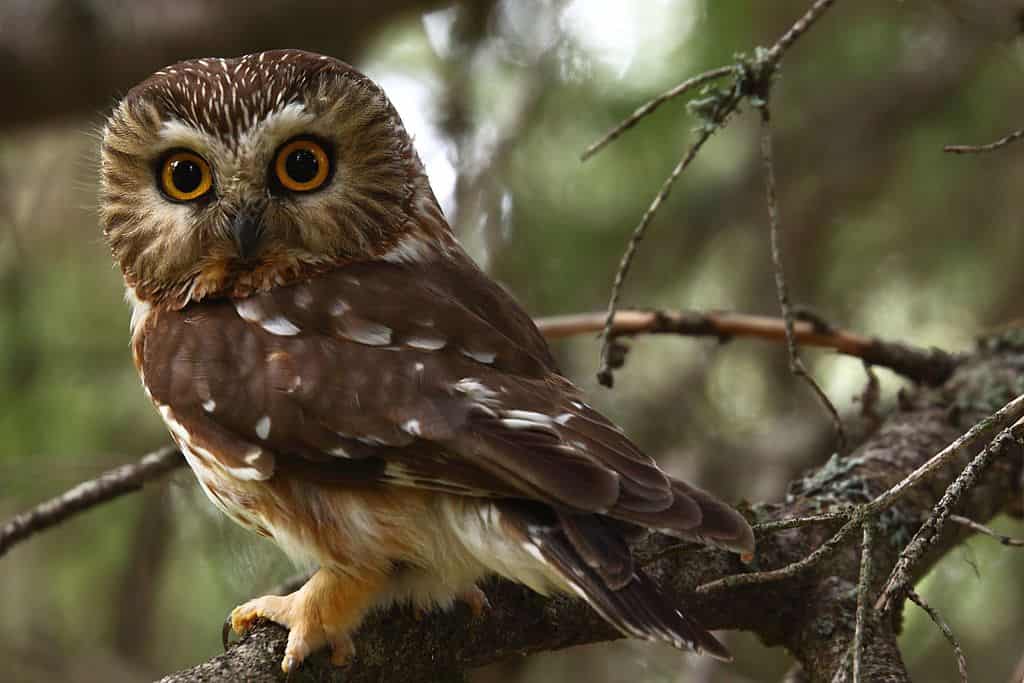
The northern saw-whet owl is a yellow-eyed species and one of North America’s smallest owls.
©Kameron Perensovich, CC BY-SA 2.0, via Wikimedia Commons – License
Northern saw-whet owls are migratory birds that overwinter in Alabama. The ADCNR reports they are uncommon in the Inland Coastal Plain and Tennessee Valley regions and locally rare in the Mountain region. Their preferred habitat in the state is dense evergreen thickets.
6. Short-Eared Owl (Asio flammeus)
Status in Alabama: High Conservation Concern
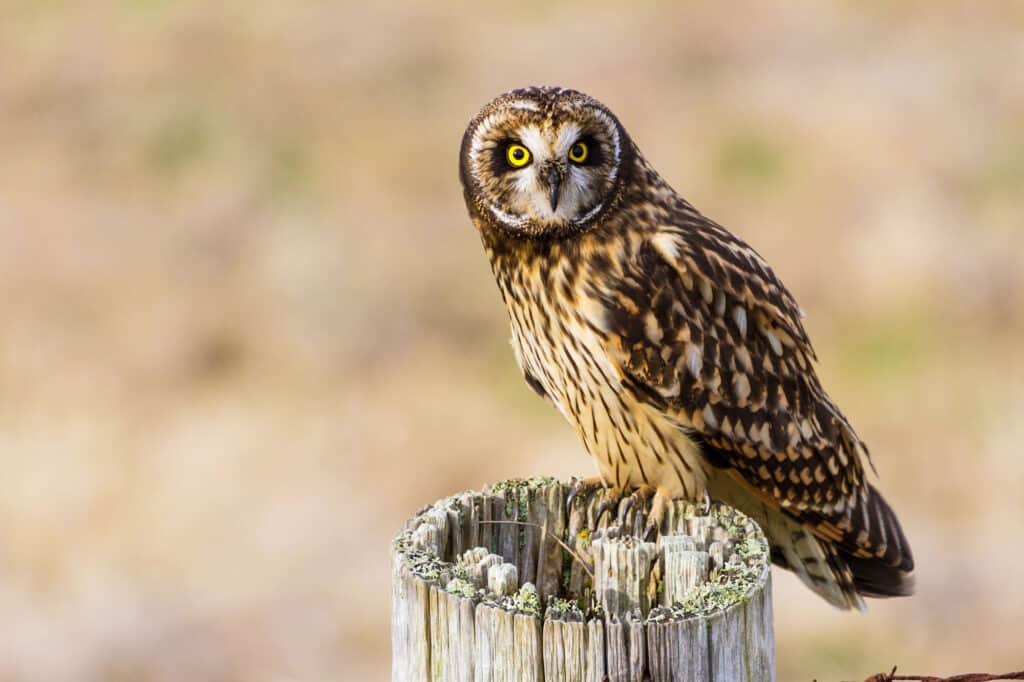
The short-eared owl is a medium-sized, yellow-eyed, diurnal species.
©iStock.com/Devonyu
Short-eared owls are migratory birds that overwinter in Alabama. The ADCNR reports they are uncommon in the Gulf Coast region and rare in the Tennessee Valley and Inland Coastal Plain regions. They prefer open terrain in all seasons, and as a diurnal species, they are also more likely to be spotted during the day.
7. Long-Eared Owl (Asio otus)
Status in Alabama: Occasional
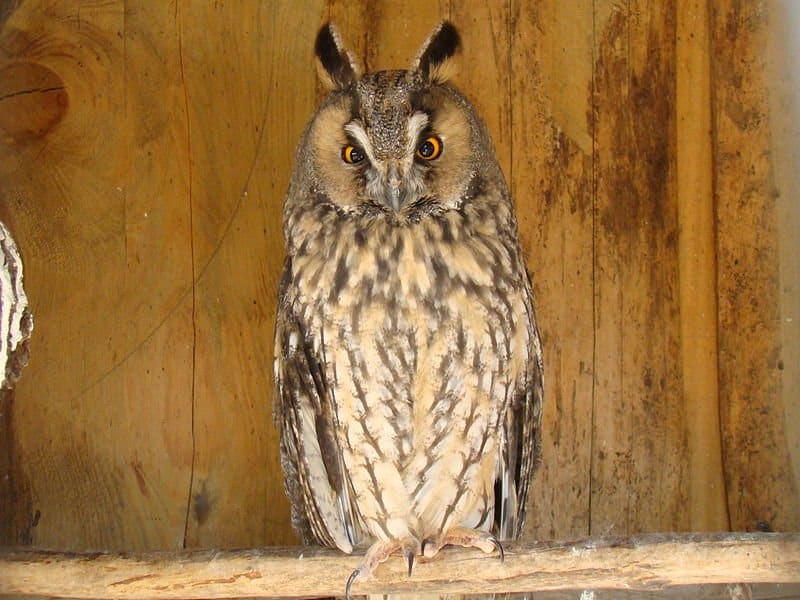
The long-eared owl is a medium-sized, yellow-eyed species named for its prominent ear tufts.
Long-eared owls are migratory birds uncommon for fall and winter across Alabama. They prefer densely wooded habitats with access to open areas. In Alabama, they are most often spotted in conifer groves.
8. Burrowing Owl (Athene cunicularia)
Status in Alabama: Occasional

The burrowing owl is a small, yellow-eyed species that is unusual for being both a diurnal and colony-nesting owl.
©Mauricio S Ferreira/Shutterstock.com
Burrowing owls are migratory birds that are uncommon visitors to Alabama. They are sometimes seen during migration and winter in open country and on beaches in the Gulf Coast region.
9. Flammulated Owl (Psiloscops flammeolus)
Status in Alabama: Accidental
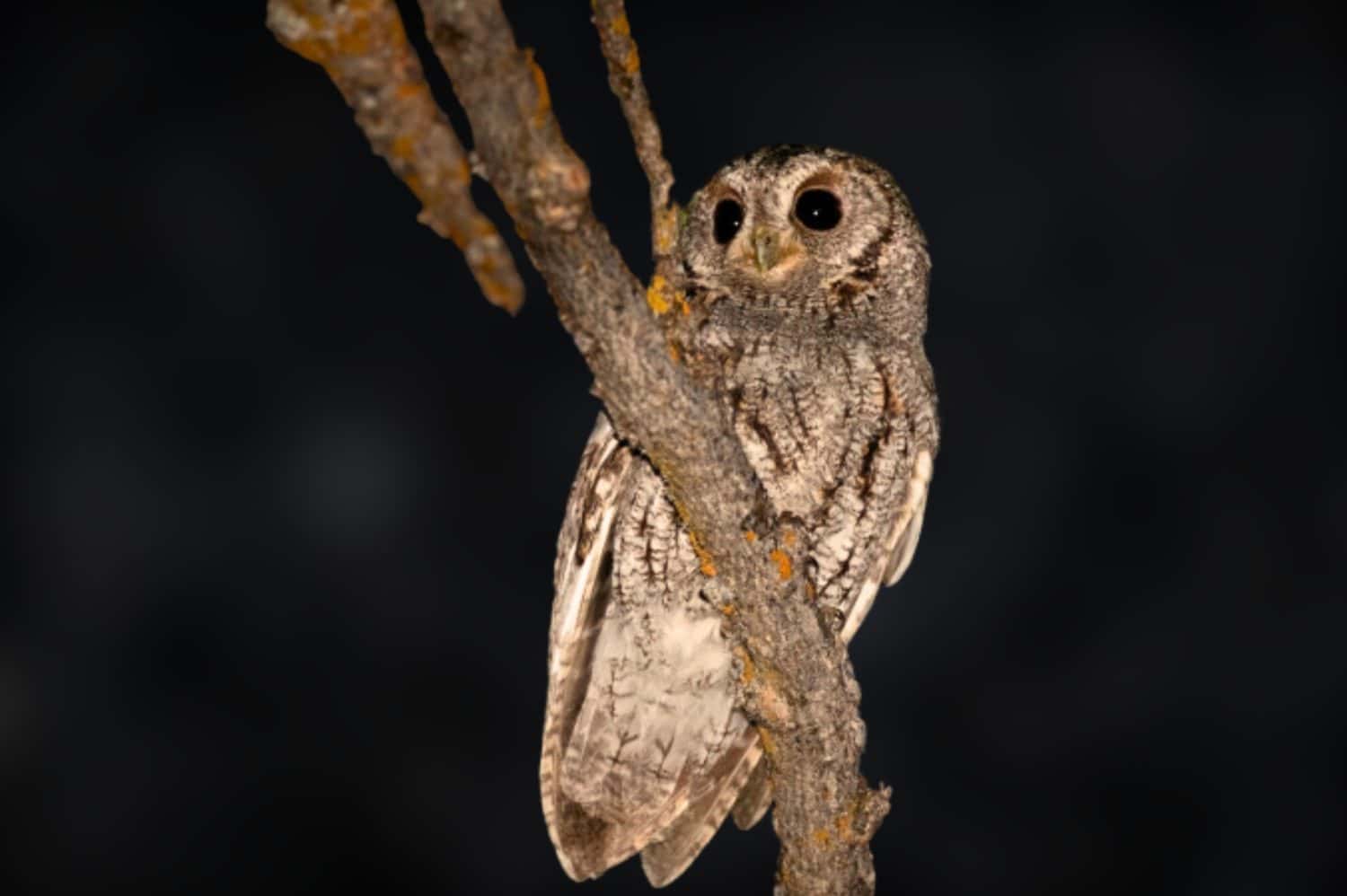
The flammulated owl is a small, dark-eyed species with both red and gray plumage phases.
©VisualVanguard/Shutterstock.com
Flammulated owls are migratory birds that generally reside further west. They are considered an accidental species in Alabama, most recently spotted in October 2022.
10. Snowy Owl (Bubo scandiacus)
Status in Alabama: Accidental

The snowy owl is a large, yellow-eyed species and the only primarily white owl.
©Carol Gray/iStock via Getty Images
Snowy owls breed in the Arctic tundra but occasionally appear in the U.S. as part of irruptive migrations during the winter. However, it is incredibly rare for them to make it down as far south as Alabama. In fact, the last time one was recorded in the state was way back in 1975!
Summary of the 10 Types of Owls in Alabama (Most Common to Rarest)
| Species | Season | Status in Alabama |
|---|---|---|
| 1. Barred Owl (Strix varia) | year-round | Lowest Conservation Concern |
| 2. Eastern Screech Owl (Megascops asio) | year-round | Low Conservation Concern |
| 3. Great Horned Owl (Bubo virginianus) | year-round | Moderate Conservation Concern |
| 4. Barn Owl (Tyto alba) | year-round | Moderate Conservation Concern |
| 5. Northern Saw-Whet Owl (Aegolius acadicus) | overwinter | Moderate Conservation Concern |
| 6. Short-Eared Owl (Asio flammeus) | overwinter | High Conservation Concern |
| 7. Long-Eared Owl (Asio otus) | migration/winter | Occasional |
| 8. Burrowing Owl (Athene cunicularia) | migration/winter | Occasional |
| 9. Flammulated Owl (Psiloscops flammeolus) | migration/winter | Accidental (last spotted 2022) |
| 10. Snowy Owl (Bubo scandiacus) | winter (irruptive migration) | Accidental (last spotted 1975) |
The photo featured at the top of this post is © iStock.com/Harry Collins
Thank you for reading! Have some feedback for us? Contact the AZ Animals editorial team.







